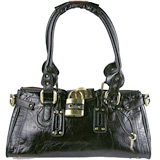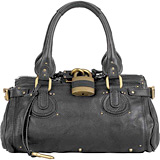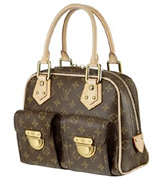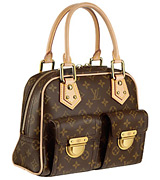
We've moved!
Chat with your favorite shopper, and more, at Kasamba.
The Truth About Fakes

Fake

Real


How do you tell? Do you care?
Chat with me to find an authentic handbag.
Walking down Canal Street in downtown New York, you are surrounded by counterfeit designer bags: Louis Vuitton, Prada, Fendi, Chloe—you want them all, and why not? They’re so cheap! You pass a vendor whispering “Louis Vuitton bags. We have them.” This man, whom you have never met, leads you into a dark basement. “This is a bad idea,” you think, “Will I see another day?” He lifts a sliding metal door to reveal a sea of beautiful Louis Vuitton bags. You have to buy one—but will you make it out alive to show your girlfriends?
Should you feel bad about buying counterfeit bags? According to the International Anti-Counterfeiting Coalition, counterfeiters cost businesses roughly 200 billion dollars each year. They also face allegations of employing child labor and even of supporting terrorism. But it is not illegal to buy fake handbags—only to sell them. You should know what you’re buying, whatever you decide to do.
Fakes are very good these days. Some counterfeit handbags are so similar to the originals, only a forensic expert can spot the differences. Your new “Fendi” handbag may come with a monogrammed dust cover and an “authenticity” card. Some eBay sellers even promise a receipt from a high-end store like Neiman Marcus, but they use CD-ROMS with receipt templates to create fake ones.
What are gray market handbags? Do you ever wonder why you see Gucci bags for 30, 40, or even 50% off on eBay and other unauthorized websites? Are you skeptical when you see “100% authenticity guaranteed” listed under a $50 “Prada”? Gray market bags are items being sold outside of normal distribution channels by companies which have no relationship with the producer of the bags. Entrepreneurs import gray market bags illegally and sell them for much less than the market price. Manufacturers will not honor warranties of gray market handbags.
So how can you possibly tell if a bag is real or fake? You can't count on fashion houses for advice—they don't want to give all their secrets away! Your only guarantee is to buy from the label's own store or website, or an authorized dealer. But if you have to go outside these sources and you want to save money, there are a few red flags to look for:
- Too good to be true is generally just that. If you are buying a $1000 Chloe or Gucci bag for $100, you can rest assured that it is fake.
- Sellers have their tricks—what you imagine as an honest mistake may be deliberate fraud. If you are buying from eBay, please look at the seller's feedback and READ the feedback. Private feedback is suspicious. Look closely at the seller’s spelling and grammar. If you see “1%% authentic”, this is not good.
- Don’t ignore the obvious: if the tag says “Made in Taiwan,” the bag is not real! Most high-quality leather bags, such as those by Marc Jacobs, are made in Italy, not in France, England or Japan.
- It's all in the details: the hardware, the stitching, the lining. Fashion houses use high-quality zippers, the stitching on their bags is sewn in a certain way, and lining colors differ by model. For example, Marc Jacobs bags usually have Riri brand zippers. Examine the handbags at an authorized dealer and educate yourself.
- Trust your gut. Real luxury goods are made well, are more sturdy and usually heavier than fakes.
- Go to the source. If you are dying for the real thing but want a bargain, go to the label’s outlet store. They will have merchandise from past seasons at a steep discount.

